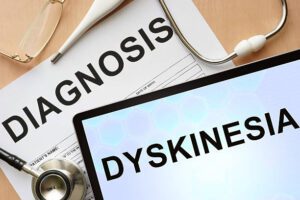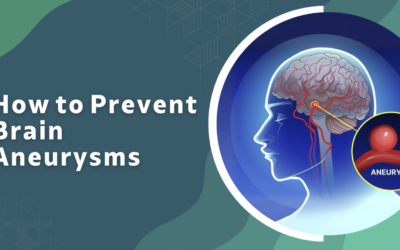Dyskinesia Treatment in Mumbai
Dyskinesia is an uncontrolled movement. It can arise due to long-term levodopa use and chronic Parkinson’s disease. This problem does not affect everyone, and the severity of dyskinesia varies. New and upcoming treatments are meant to prevent dyskinesia.
 Dr. Gurneet Singh Sawhney is one of the leading neurosurgeon in India. He focuses on providing advanced and most-effective dyskinesia treatment in Mumbai, India. Hence, he is recognized as one of the top dyskinesia specialist in Mumbai.
Dr. Gurneet Singh Sawhney is one of the leading neurosurgeon in India. He focuses on providing advanced and most-effective dyskinesia treatment in Mumbai, India. Hence, he is recognized as one of the top dyskinesia specialist in Mumbai.
Furthermore, Dr. Gurneet Singh Sawhney has extensive experience in the field. He can treat any neurological condition, whether minor or complex. Moreover, he has significant expertise executing advanced neurosurgeries such as DBS surgery.
He is considered one of the best neurosurgeon in Mumbai, India, for his skills in performing complicated brain surgery and other neurosurgeries.
Continue reading this article to know about dyskinesia, its causes, symptoms, diagnosis, treatment, and more.
Let’s have, An Overview of Dyskinesia
Connect with experts who understand dyskinesia and can help you thrive.
Now, let’s know, Causes of Dyskinesia
- Dyskinesias are frequently linked to drugs, subsequent diseases, or brain anatomical alterations.
- Dyskinesias can occur without a specific cause or established risk factor.
- The most prevalent cause of dyskinesia is long-term usage of the drug levodopa.
- Because of its effectiveness, levodopa is the chosen medicine for the treatment of Parkinson’s disease.
Signs & Symptoms of Dyskinesia
The symptoms of dyskinesia differ from person to person and also depend on the type of dyskinesia. Symptoms of dyskinesia can be severe, with many portions of the body moving uncontrollably.
Some of the symptoms of dyskinesia might look like:
- fidgeting

- wriggling
- the swaying of the body
- bobbing of the head
- twitching
- restlessness
Say goodbye to dyskinesia symptoms. Explore treatment options and take charge
Diagnosis and Treatment of Dyskinesia
When determining the correct diagnosis, it will be critical to take note of the afflicted motions and body locations. An aberrant involuntary movement scale may be used to assess the severity of the illness.
The various unusual movements that distinguish the different kinds of dyskinesia will almost always necessitate the careful observation and clinical evaluation of a neurologist or movement disorders specialist.
If you have bothersome dyskinesia, talk to our dyskinesia specialist in Mumbai, Dr. Gurneet Sawhney, about the following treatment options:
1. Changes in Medication:

2. Deep brain stimulation (DBS) Surgery:

3. Other Treatments:
Some doctors use Botox injections or botulinum toxin to treat dyskinesias that affect the face, neck, and limb regions.
Several more medicines for the treatment of dyskinesias are in clinical trials. Melatonin and oestrogen, which alter dopamine-controlled behaviour and protect against cell damage from long-term antipsychotic medication usage, are potential therapies for tardive dyskinesia.
Why Choose Dr. Gurneet Singh Sawhney for Dyskinesia Treatment in Mumbai, India?
- Dr. Gurneet Singh Sawhney is a remarkably competent neurosurgeon who excels in a wide range of neurosurgical procedures.
- He is recognized as one of the most reputable neurosurgeons in Mumbai due to his consistent ability to treat debilitating neurological diseases effectively.
- Due to his devotion, determination, and hard work, Dr. Gurneet Singh Sawhney has completed more than 14 years of practice in various revolutionary neurosurgeries.
- The friendly and engaging approach of Dr. Sawhney makes him very accessible to his patients.
Don’t let Dyskinesia hold you back. Start your journey towards relief
Frequently Asked Questions
Is dyskinesia curable?
Dyskinesia is a condition that can exist on its own. However, it is frequently linked to brain injury, antipsychotic drugs, or long-term use of levodopa, a Parkinson’s disease medication. Commonly doctors utilize drugs or surgical correction of the underlying cause to treat dyskinesia.
How does dyskinesia feel like?
Dyskinesias are involved, unpredictable, writhing movements of the face, arms, legs, or trunk. They are usually fluid and dance-like but occasionally induce jerks or slow, prolonged muscle spasms.
How long does it take for levodopa to develop dyskinesia?
It usually doesn’t appear right away. It is crucial to remember that it takes between 4 to 10 years from the commencement of levodopa treatment for dyskinesia to appear. The severity varies according to the individual.
Can exercise help with dyskinesia?
In some cases, exercise has been shown to help control tremors and other uncontrollable movements. Consult your doctor to determine what type of activity is appropriate for you. Walking, dancing, and aerobic programs are all available options.
Does dyskinesia have an impact on sleep?
According to research, poor overnight sleep has been linked to dyskinesia in Parkinson’s patients.
Blogs
How to Prevent Brain Aneurysms
Brain aneurysms are abnormal bulges in the brain’s blood vessels. If left untreated, these aneurysms can rupture, leading to severe health consequences such as stroke, brain damage, or even death. While preventing a brain aneurysm entirely is not always possible,...
Mini-Stroke Symptoms in the Elderly
A mini-stroke, also known as a Transient Ischemic Attack (TIA), occurs when there is a temporary blockage of blood flow to the brain. In elderly individuals, TIAs can be especially concerning, as they often signal an increased risk of a full-blown stroke. Dr. Gurneet...
What Are the 5 Warning Signs of a Mini-Stroke?
A mini stroke, medically called a transient ischemic attack, is the body's early alert that a major stroke may be developing soon. A brief blockage in the brain stops oxygen flow for minutes. Even though symptoms fade quickly, the impact on health is serious. These...



